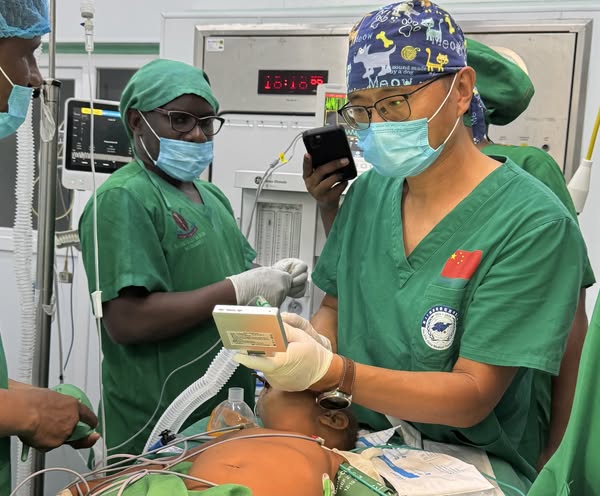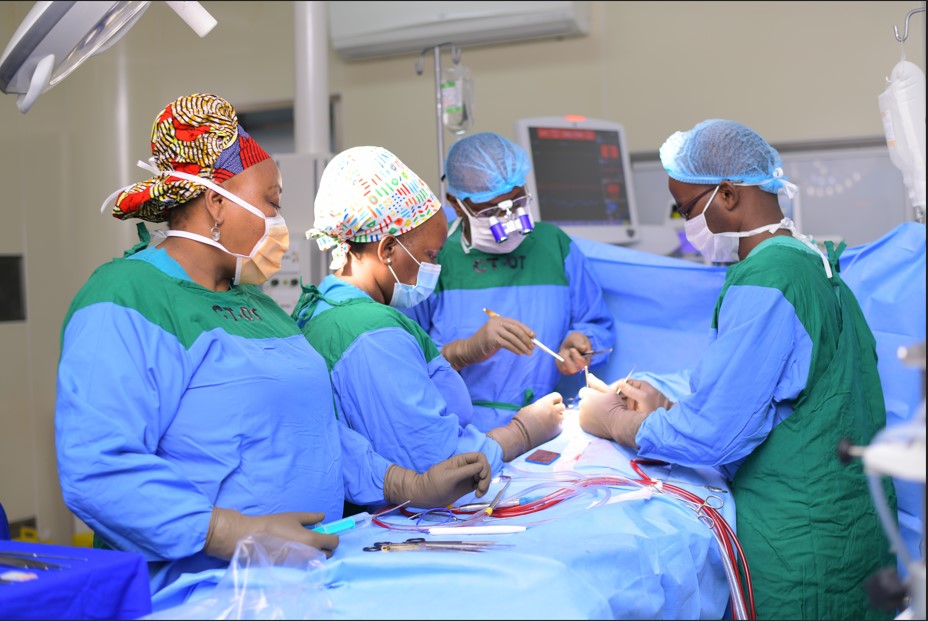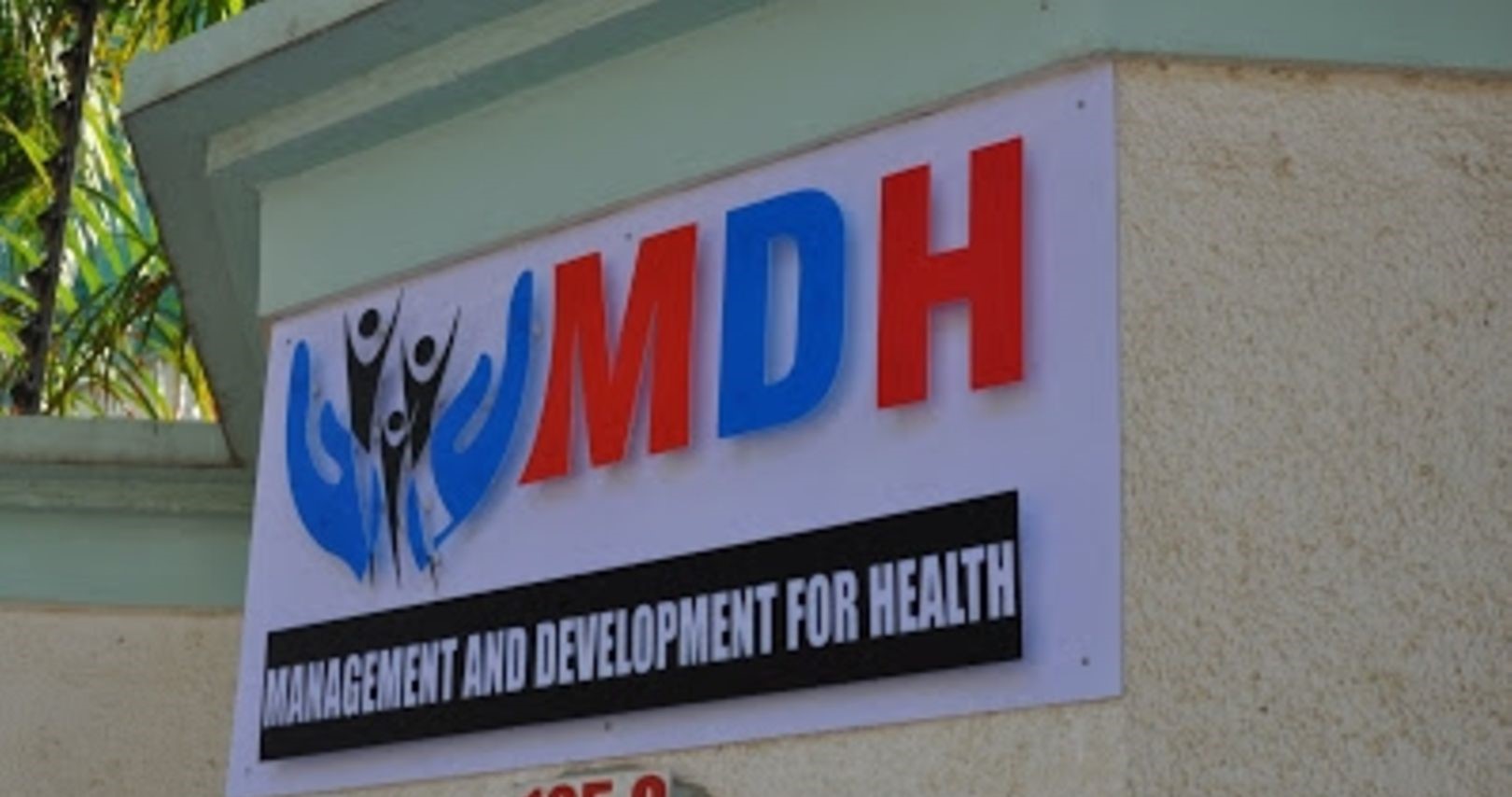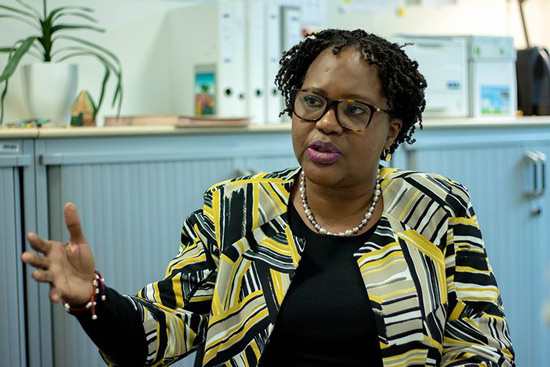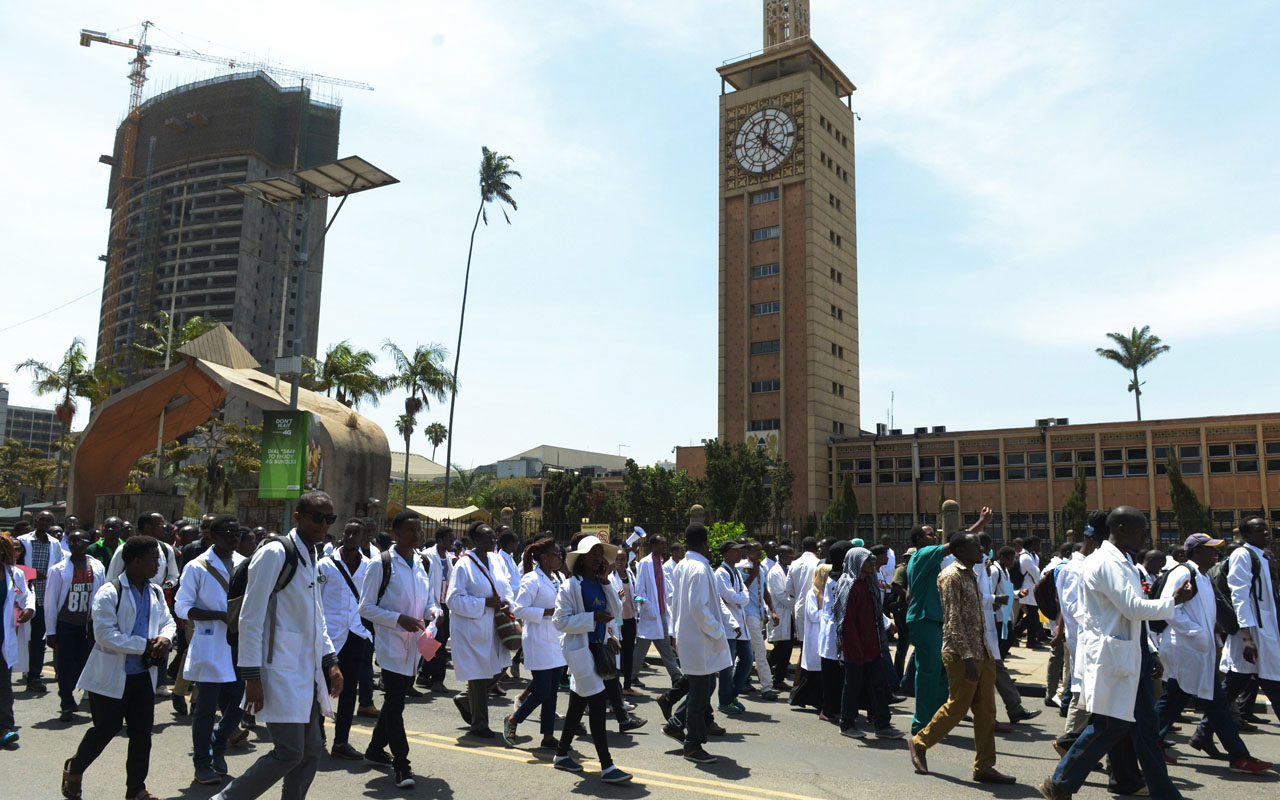It was about five months after her appointment to work as Director in the Office of Africa Regional Director at the World Health Organization (WHO) that I had a rare opportunity to speak to her: Dr Mwele Ntuli Malecela, who has passed on.
‘Rare opportunity’ indeed because, for months prior to her appointment to work with WHO-Africa, she had kept a low profile in Tanzania.
Mwele, was the first woman to be appointed to the position of Director General of the National Institute for Medical Research (NIMR) in Tanzania. But in 2016, her appointment was unceremoniously revoked by then President John Magufuli(without stating reasons) a day after she spoke to the press, giving scientific evidence about Zika Virus in Tanzania.
At the height of competition between politics and science during that time, Mwele exuded professionalism and integrity.
Also read: Zika in Tanzania: The 60-year-old-evidence you can’t deny
This year’s #WomenInScience in #Africa should be dedicated to Dr Mwele Malecela who passed away yesterday
An outstanding scientist and strong Shangazi who refused to bow to Strong Man tactics and betray her scientific knowledge just to appease a doctored narrative
RIP Mwele! pic.twitter.com/JsprmjkvQQ— Maria Sarungi Tsehai (@MariaSTsehai) February 11, 2022
I was one of the journalists making efforts to get her side of the story about her exit from NIMR and what that meant for the future of science research in Tanzania. But for several months, my efforts hit a brick wall. When I finally got a chance to speak to her, it was April 2017, and she had left Tanzania.
Here we were in Geneva Switzerland, after travelling all the way from our respective African countries. She was coming from WHO/AFRO – Brazzaville, and I from Dar es Salaam. We were both attending a global summit on Neglected Tropical Diseases (NTDs). I knew her as a media-friendly researcher, unlike many scientists who suffer media-phobia. She liked pronouncing my name as Syracuse(City in New York State) whenever we met for interviews while still at NIMR.
But this time in Geneva, she wasn’t ready to speak to a Tanzanian journalist, given the manner in which her exit from NIMR triggered political sentiments. She however couldn’t escape my nagging. When she finally spoke to me, the deal was “no speaking about the exit from NIMR.”
Did we really not speak about it? This is how we started:
Excerpts:
Qn: Talking of Neglected Tropical Diseases in the Tanzanian context, how neglected are they?
Ans: To be honest, in Tanzania I don’t think they are really neglected. There was a time when there was little knowledge of the diseases in terms of their distribution–specifically five of them which have been discussed at length at this NTD summit. Looking at those diseases in Tanzania, the picture was not clear before the mid-90s. Data was not well-organized and there were no program based-approaches in dealing with the NTDs. The data was sporadic—showing incidences here and there. For instance, there was only data showing that Lymphatic Filariaisis was in the Kilombero River Valley, then in certain areas such as the Coast of Tanzania, but there were no concerted efforts to map the whole country to find out the real burden of NTDs. And, for Lympahtic Filariasis which I have worked on for a long time, there was a time we had to go out in the night—between 10pm and 2a.m to collect blood samples because that’s the time when the parasites are in the circulation, but when diagnostics became available, it became easier to trace the parasites at any time of the day, also the mapping exercise became easier.
Also read: Dr Malecela wins a prize in control of Neglected Tropical Diseases
Then, the distribution of NTDs became known in Tanzania and it was easier then, to convince policy makers that we really have a problem. Initially, it would have been very difficult to expect policy makers to react to something that was not clear. At this summit, Mr BillGates spoke about this concept—of having real measurements of the problem. That, when we were able to measure, countries were then able to take steps. Saying that the diseases are neglected, it’s a little bit unfair. In Tanzania, and again I will go back to Lymphatic Filariasis. Initially, we used to administer one drug Diethyl Carbamazine (DEC) for Lymphatic Filariasis, alongside other diseases such as Oncocercasiasis but we realized that the drug was causing adverse reactions to the patients with Oncocercasiasis. So we could not continue using this drug in areas where there was Oncocercasiasis. Later, when we got the right drugs, such as Mectizan and Albendazole, which were donated, then we moved forward. Then at that time, there was a World Health Assembly Resolution which brought together all the member states in 1997, to embark on eliminating Lympatic Filariasis.
All this brought up a global commitment towards dealing with some of the NTDs. With all that momentum, then countries began their own programs, most of which started after the 1997 WHO resolution. So, to say “neglected” is a little bit too much of a broad statement for things that have been unfolding in a chronological manner.
Qn: Is there any way, your roles at WHO entail extending services to Tanzania? How do your efforts trickle down to your country?
Ans: [Little laughter…]. Well, that’s somehow difficult to explain—and a little bit controversial.
Qn: Why controversial?
Ans: It’s difficult to say. You see, what I do, eventually trickles down to all African countries—Tanzania inclusive. What one is supposed to be [when serving at the level of WHO—Afro] is to become “citizen of Africa” or rather a “citizen of the world.”
Qn: But there must be a way you represent your country. How about that?
Ans: Mmm! I am now a Tanzanian who is serving the African continent. It’s a precious opportunity that has been accorded to me to serve the continent. This was a dream of our founding leaders such as Mwalimu Julius Nyerere and Kwame Nkurumah of Ghana. In the spirit of Pan-Africanism, I am really glad to be in this position. I really desired to continue serving back home in my country but this opportunity I got at WHO-Afro gives me another chance to serve at the continent level.
Qn: That’s indeed inspiring. And I hope it keeps alive your long-held dream of becoming the President of Tanzania. Correct?
Ans: [Laugher…]…That’s a controversial one. Uh! [she proceeds in a laugher…]
Qn: Okay then, but looking back 5 to 10 years, what do you think you could have done differently—or in fact better for Tanzania in the control of NTDs?
Ans: Ten years ago, that was around 2007. We were at the point of integrating the NTDs at that time, so,I don’t think there is anything I could have done differently. Five year ago, there was in fact a better story to tell of the efforts invested—work had picked up already. But, if you would ask me 20 years ago, there were many things I could have done differently. By the year 2009, many things had been done; Tanzania had been well represented at the London Declaration of NTDs. And, we had already made tremendous steps in terms of scaling up the programs and now we have reached this stage—like we have heard during this summit—where countries are making commitments to eliminate the NTDs in many countries including Tanzania.
Qn: It seems to me that about 20 years ago, the fight against NTDs was still at infancy, that’s when you think you could have intervened better, right?
Ans: Yes. Because 20 years ago, I would have talked about integrating the NTD programs at that time. I would have said let’s put them together under one umbrella. In Tanzania, we integrated late—we did this at a time when we realized that it was a long overdue…this was only achieved at around the year 2000. But I think we should have integrated right from the very beginning. However, we went in with strong vertical programs and fortunately, it has worked out. In fact, part of the achievements is what we see people celebrating since we arrived here in Geneva.
Qn:As an experienced researcher on NTDs what are the available opportunities that you think Tanzania needs to tap into to eliminate the diseases to at least reach that level of elimination that countries such as Togo has attained—to completely be free of Lymphatic Filariasis.
Ans: Well, that’s a question that someone at the Ministry of Health in Tanzania can answer better. But I think Tanzania has taken advantage of almost all the available opportunities through annual partners’ meetings and the program manager can say on this better. However, on a serious note, I think areas that need to be tapped into are areas of morbidity control. This means, the backlog of patients afflicted by NTDs who need support. There are patients with hydrocele who need surgery, those with Trachoma that need trichiasis surgery. Those are the areas that Tanzania would definitely need support from partners who can support that.
Qn:I have seen that there is a lot being spoken about and done when it comes to Mass Drung Administration(MDA) when it comes to NTD control. But I think there is more on tackling poverty–especially if we are to get to the crux of the problem. What’s you take on this?
Ans: I think this is something akin to the chicken-and egg paradox. That, do we tackle poverty first and deal with NTDs later? Or which one has to be solved first? Well, the conclusive remedy to all these diseases, which are in fact diseases of poverty, is socio-economic development. That’s the best. But before we get there, we have to deal with what is in front of us—the people who are affected by these diseases; who live in cycles of poverty, they are unable to work and in fact contribute to that socio-economic development. But as we deal with this, we should not lose sight of the fact that it’s socio-economic transformation that will bring us to that success story of elimination.
Qn: Okay, now let’s speak on the future of research in Tanzania. You think the country is making headway in exposing the true burden of NTDs through research?
Ans: I think Tanzania is performing well. There is no problem at all. You see, the issue is about properly using the data that has been obtained in making policy decisions. That’s where the problem lies—and this is for many African countries. But I have no doubt about the ability of our scientists in collecting data and doing all the mapping.
Qn: You have been involved in research activities almost half of your life, you can now foresee Tanzania’s status in research?
Ans: It’s true, I have been in research since I was a young girl and I do believe there is a room for Tanzania to excel in research. Health research is making very good progress. This I have seen. The key issue is on making sure there is more collaboration.
Qn: What kind of collaboration do we need to work on now–between research institutions and the government?
Ans: No. Not really. I mean collaboration among the research institutions themselves—and the academia. And this entails using the comparative advantages that such institutions have in making research better.
Qn: You have interacted with the media in Tanzania. How is the media driving the research agenda? Or in other words, what’s your experience with how media reports on research?
Ans: Mmm! I think the biggest problem with the media in Tanzania, is that there is an obvious lack of skills among the journalists on how to report what we researchers do. And, unfortunately when they can’t do it perfectly, we [the researchers] tend to unfairly blame them—and then we sit back and say, we don’t want to speak to them anymore. Right now[in Tanzania], there is almost like a “freeze”—of not many people not wanting to speak to the media because of the feeling that what they speak might be misconstrued and at times taken out of context. I think, at this point, as a country we need to build the skills of our journalists to be able to report certain fields through specialization. Let’s make journalists that report on science, technology, medicine and so on. Without this kind of specialization, we are always going to have problems with the media. Initially, we thought it was okay, as long as the journalists transfer the message, no problem but once there a problem, the information they send can even ruin careers. This will always create conflicts between researchers and the media.
Qn: And a true scenario is like what happened when you announced findings on Zika virus in Tanzania? Right?
Ans:[Laughter…]…I leave that to you. Ha ha ha ha!
Qn:Well, but it’s a true story of what really happened. Isn’t it?
Ans: [Laugher…], I mean, we were at the meeting where so many diseases were discussed—we talked about the Ebola vaccine, the HIV vaccines and a wide range of things…but the journalists just decided to blow Zika out of proportion.
Qn: So, how bad is that?
Ans: [Laugher]…well, at the end of the day someone lost their job.
Qn: Well, may be that’s how the media works, but, finally, how do we bridge this gap?
Ans:I have nothing against journalists, but what I want to say is that we need to do something. Without investment into how journalists work with researchers, it’s going to be difficult for researchers to work with the media. The researchers will continue shying away from the media because we [researchers] have the obligations to be sure that what we say is accurate, clear and user-friendly. I know that researcher also have the trouble of communicating “clearly” what they do. We need to sort out all those, otherwise, we will always end up in trouble with the media.
The interview excerpts were initially published in The Citizen Newspaper in April 2017

